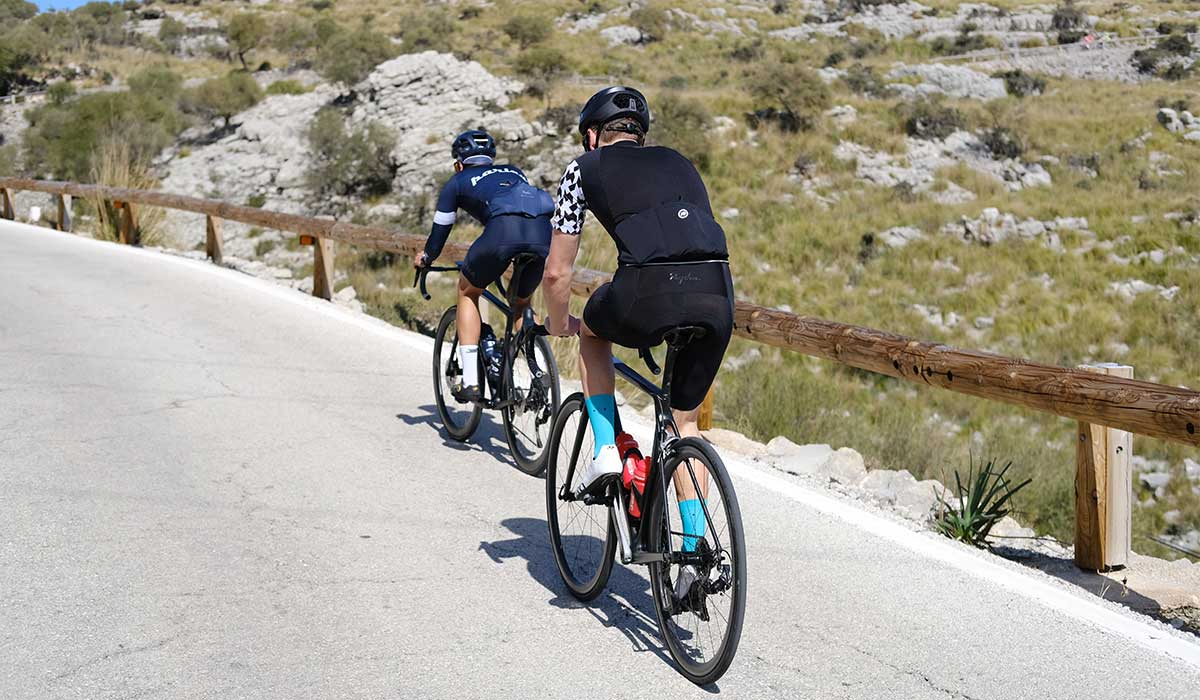
Last updated: 8 April 2024
Here at Pedalsure, we always look forward to flying to the continent and riding on some of our favourite roads. An important element of the planning is working out how you will travel with your bike and how much it will cost. Let's take a look at costs with the major airlines.
Don't forget, we offer 30 or 60 days overseas cover to extend your cycling insurance overseas. Get a quote today.
You may also be interested in:
- Ultimate Road Cycling Holiday Checklist
- 6 Top Tips For Taking Your Bike Abroad
- 8 Of The Best Cycling Holiday Destinations In Europe
Airline Costs

Annoyingly there is no standardised way of charging sports luggage by airlines. As a result, the cost of adding your bike to your flight and its weight limit differs from airline to airline, which makes it particularly challenging if your destination is far enough away to have you on two or more airlines. To make things a little easier, we have compiled the information on flying your bike with the UK’s most popular airlines.
*Prices accurate as of 8 April 2024.
British Airways
You can take bikes as part of your checked baggage allowance. Must be in a protective bike box/bag.
- Cost – free as part of checked baggage allowance
- Size – 190 x 95 x 65 cm
- Weight – 23kg
easyJet
Bikes count as sports equipment and incur an extra cost. Must be in a protective bike box/bag.
- Cost – £45 pre-booked
- Weight – 32kg
Ryanair
Bikes count as sports equipment and incur an extra cost. Must be in a protective bike box/bag.
- Cost – £60 pre-booked
- Weight – 30kg
Aer Lingus
Bikes count as sports equipment and incur an extra cost.
- Cost – £40
- Weight – 23kg
Air France
Bikes count as sports equipment and incur an extra cost. Must be in a protective bike box/bag.
- Cost – €55 (within Europe)
- Weight – 23kg, 32kg in business class
Norwegian
Bikes count as sports equipment and incur an extra cost. Must be in a protective bike box/bag.
- Cost – £30 pre-booked
- Weight – 23kg
KLM
Bikes count as sports equipment and incur an extra cost. Must be in a protective bike box/bag.
- Cost - €55
- Weight – 23kg
Lufthansa
You can take bikes as part of your checked baggage allowance. Must be in a protective bike box/bag.
- Cost – free as part of checked baggage allowance
- Maximum length – 315 cm
- Weight – 23kg
Jet2
Bikes count as sports equipment and incur an extra cost. Must be in a protective bike box/bag.
- Cost – £35
- Weight – 32kg
TUI
Bikes count as sports equipment and incur an extra cost. Must be in a protective bike box/bag.
- Cost – £30
- Weight – 23kg
Train costs

If you are travelling within Europe and would rather not go by plane, a quick and easy solution is to go by train on either the Eurotunnel or Eurostar. Both have specific benefits to your trip and accommodate bicycles.
Eurotunnel
Travelling in your own car on the Eurotunnel gives you a bit more freedom than if you were to travel by plane. Plus, if you're an e-bike rider you cannot take your bike on a plane due to its lithium battery so crossing the channel on a train or ferry is the best option for you.
There are no size restrictions or extra costs other than the booking fee; you could even take your whole fleet of bikes and kit if you have enough space. The only thing you need to note is the size of your car if you’re taking your bikes on a roof rack. The Eurotunnel has a height limit of 6ft/1.85m so as long as you don’t go over that without securing a high space booking, your trip will be a breeze.
You can also travel on the Eurotunnel without a car and with just your bike. This is the ideal option for riders who are embarking on a tour of Europe or are skipping across the channel to catch some racing.
At £50 per bicycle each way, it’s a more economically viable way of getting your bike abroad. The Eurotunnel arranges a minibus to pick you and your bike up in Folkestone, travel on the tunnel to France and drop you off in Calais.
NB: A minimum of 10 working days advance booking is required for the bike-only option!.
Eurostar
If you’re looking to get across the channel to catch the final stage of the Tour or a cobbled classic, and you wish to get some riding in while you’re at it, the ever-reliable Eurostar can be a safe bet.
After some disruption caused by the pandemic, bikes are once more permitted to be taken on the Eurostar on the following trains:
- London to Brussels - Eurostar accepts fully assembled bikes and bikes which have been disassembled and stored in a bike box/bag.
- London to Paris - Eurostar only accepts bikes which have been disassembled and stored in a bike box/bag.
Prices start from £45 for advance bookings.
For more information on the specific travel instructions, visit the Bikes on Board section of the Eurostar website.
Ferry costs

Second only to train travel in terms of convenience is getting across to Europe on a ferry. As a sea faring nation, it makes sense to use a ferry to get to your destination and there are tons of options all around the UK.
As with train travel, it’s easy to travel with your bikes on a rack and pretty much all of the companies in the UK – including the two largest Europe-serving companies, P&O Ferries and Brittany Ferries – allow you to take a bike on board as your main mode of transport. All you have to remember is what side of the road to be on when you get off at the other end.
How to pack your bike
If you’re flying with your bike it will need to be properly packed up. We recommend hiring a dedicated hard case bike box– rather than a cardboard box like the one your bike might have been delivered in – because they are designed specifically for transporting bikes. We also require this as part of our policy terms if you have overseas cover with us.
Make sure you give yourself plenty of time to pack it up carefully and with as little stress as possible. You’ll have to remove your wheels, pedals, bars and deflate your tyres, and you’ll often find that fitting everything into the box is something of a mind game. If you do this well ahead of time, they will thank you for it and your journey through the airport will be much easier.
To avoid issues, extra costs and general stress, we recommend you inform your airline that you’ll be travelling with a bike. If you would rather not have the hassle of taking your bikes abroad, but want to ride all the same, you could think about hiring one at your destination.
Insurance
Whatever your mode of transport, cycling insurance with our overseas option from Pedalsure is essential to protect your bike abroad and in transit. For more information on our insurance, check out our article Does Travel Insurance Cover Cycling?
Need something to secure your bike on holiday? We offer all Pedalsure customers big discounts on a range of high-security locks from our friends at Hiplok.
Just one of many ways we protect both you and your bike.
